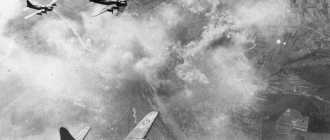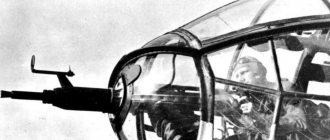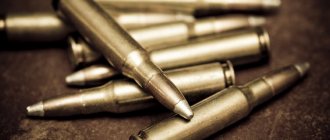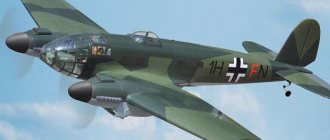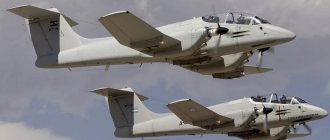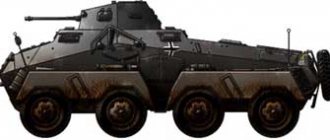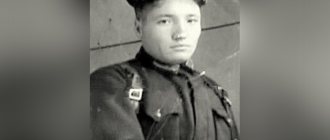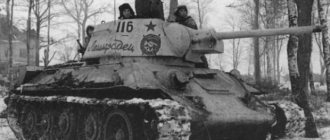Author: zaCCCPanec
12 October 2022 08:46
Community: Military
Tags: aviation stories about weapons history pages heavy bombers
11413
37
So, heavy monsters carrying tons of bombs over vast distances. Yes, that's them. Four-engine colossuses, bristling with trunks, with large crews, armored and in general - the beauty and pride of any aviation.
0
See all photos in the gallery
Not all countries were able to create such aircraft. The French, for example. They had a very, very decent project from Breguet Br.482 and even assembled copies of the Flea MV.162, but things didn’t go beyond one or two copies. Alas, Breguet's bomber looked very solid.
0
"Breguet" Br.482
×
Therefore, we will consider those aircraft that actually fought on the fronts of World War II. It doesn’t matter with what success, but they fought.
0
"Bloch" MV.162
Fighters
German fighters were the main means of achieving an advantage over the enemy in battle. The success of the combat operation of ground troops and the safety of rear facilities depended on them. The Messerschmitt Bf 109 was considered the best. It was a real German king of the air. It dominated the Soviet skies until 1942. This aircraft imposed tactics on other aircraft. He quickly picked up speed and dived the enemy. Then he quickly soared upward.
Messerschmitt Bf 109
Although the Messerschmitt was considered the main German fighter, the design department of the Third Reich developed other models of aircraft, for example, the Focke-Wulf Fw-190, Ta-152, Ta-157. The Luftwaffe fighter unit also included Heinkel He-51, He-112, He-162 aircraft, as well as Dornier DO 215D-5 and Arado Ar 68.
Bombers and attack aircraft
The Heinkel-111 was considered the most recognizable Luftwaffe bomber. He served throughout the war. The bomber was produced until 1944. Participated in battles in Europe and the Soviet Union. He won many battles, although he lacked speed and maneuverability.
Heinkel-111
Bombs from the Junkers Ju 87 Stuka bomber hit the target precisely on tanks in battles. The plane dropped bombs from a steep dive. He could aim accurately. For a terrifying psychological effect, the pilot during the battle turned on a strong signal, similar to a terrible howl.
Junkers Ju 87
However, the best attack aircraft, the Junkers Ju 88, made it into serial production. It had the qualities of a horizontal and dive bomber. Towards the end of the war, the Germans developed another powerful jet bomber - the Arado Ar 234. Other German aircraft used as bombers: Dornier Do 217, Junkers Ju 188, Messerschmitt Me 264.
Junkers Ju 88
Reconnaissance and communications aircraft
The reconnaissance aircraft Focke-Wulf Fw 189 Uhu brought the most benefit to the Germans on the Eastern Front. It had an unusual two-beam design, for which Soviet soldiers called it a “frame”. This device was taking aerial photographs. German bombers always came after him. It was not so easy to spot and shoot down a scout. It walked at low speed, could maneuver well, and when enemy fighters approached, it began to describe circles of small radius.
Focke-Wulf Fw 189 Uhu
The first production aircraft designed for support operations and communications was the Fieseler Fi 156 Storch. The device could support ground forces. The plane had a short takeoff. From an altitude of 3,000 m, it could make a soft vertical landing. During the war, Storch adjusted artillery fire. It flew at low speeds and had a machine gun mounted on board for protection. Other reconnaissance and communications aircraft: Blom and Voss IM 141, Henschel Hs 126, Flettner FI 282 “Hummingbird” helicopter, Henschel Hs 130.
Fieseler Fi 156 Storch
Heinkel He.177 "Greif". Germany, 1939
0
I don’t know how to properly treat the conclusions of home-grown experts who call the Griffin a failure. And it doesn’t matter at all, the failure of Heinkel, the Ministry of Aviation, Goering, Hitler... The main thing is failure. Meanwhile, the “failure” was produced in quantities of more than 1000 units, fought, but in fact the plane was wonderful. In general, in it, Heinkel’s gang managed to implement absolutely all the technical innovations of that time, so that their energy could be used for peaceful purposes...
0
But no ingenious design solutions will help if the aviation community itself is mired in behind-the-scenes games. Well, the fact that long-range/strategic aviation turned out to be an unbearable load for German industry... So it is that in the USSR they were unable to produce more than a hundred Pe-8s for various reasons. And what was so unusual about “Griffin”?
0
Twin propulsion system. Yes, at the beginning I said that today we would talk about four-engine heavy bombers. I didn’t lie, the Non-177 had four engines. More precisely, two 12-cylinder V-shaped units, created on the basis of the DB 601, were mounted side by side and operated on a common shaft through a gearbox connecting both crankshafts. And it was called DB 606. Remote control of rifle installations that had significantly less aerodynamic drag compared to manually aimed turrets. Very helpful.
0
The He.177 was considered a dangerous and unfinished aircraft due to problems with the engines, but the pilots from the specially created “test squadron 177” had a different opinion. They received the bomber very well, which was easy to fly. He.177A-3/R3 became the first carrier of a guided weapon - the Henschel Hs 293 guided bomb. It could carry three such bombs, two under the consoles and one under the fuselage. By the way, it was the “Griffins” that successfully worked as UABs on Italian ships.
0
Advantages: good flight and combat qualities. Disadvantages: general lack of development of the machine.
German jet aircraft of World War II
During the war years, Germany put many jet aircraft into mass production. For example, the Heinkel He 162 and Messerschmitt Me 262 jet fighters, the Messerschmitt Me 163 jet interceptor, and the Arado Ar 234 jet bomber. These aircraft were produced at the end of the war. If the Messerschmitt Me 262 and Arado Ar 234 had entered production in 1942, Germany might have won the war. After all, the outcome of the battle was influenced by the release of the “miracle weapon,” as Reich Minister of Armaments A. Speer said.
Messerschmitt Me 262
The Messerschmitt Me 262 is considered the first jet aircraft in Germany. The development and improvement of the aircraft took place from 1938 to 1943. In 1944, serial production of this aircraft began. In total, the Luftwaffe received 1,433 units of equipment. This jet aircraft was superior to other models only due to the speed (more than 800 km/h) that the jet engine provided it with.
The Me 262 was used as a fighter. The device had many shortcomings. It had too much mileage during takeoff and landing and required a lot of fuel. The combat effectiveness of the Me 262 was low. The fighters were used to repel attacks on German cities by American bombers and were often shot down by them and the accompanying American fighters.
Arado Ar 234
The Arado Ar 234 jet bomber had excellent combat characteristics. It could carry bombs up to 1.5 tons and had a speed of more than 700 km/h. Its bomb sight ensured accurate destruction of targets on the ground. The Germans produced about 200 of these aircraft. The bomber was used occasionally. It was using too much fuel.
Piaggio P.108B/A. Italy, 1939
0
Living beautifully cannot be prohibited, even in such a frankly poor country as Italy. In general, it is difficult to say why they need heavy bombers. But - for the prestige of the Duce, Mussolini wanted to have at least one air group, and then, you see, it will come in handy... Several forms of projects were developed, it even got to the point that they wanted to build an American B-17 under license, but it didn’t happen. But in the end, the . Although - well, very similar to the B-17...
0
Despite the obvious borrowing of individual parts, the Italian “flying fortress” turned out to be more difficult to control and the performance characteristics were much worse. But in general, it was a fairly modern aircraft, made using advanced technology. In general, the Italians looked at the Germans' use of the FW-200 Condor as patrol and anti-submarine aircraft. There was a reason, no one canceled the eternal rival France, and in the Mediterranean the British sat as if at home.
0
Hot Italian guys were going to hang as many as three torpedoes from the plane. One in the bomb bay, and two on the external units. The unit received the famous name (how could it be otherwise in that Italy) “Knights of the Ocean”, and the commander was the son of the Duce, Bruno Mussolini. True, Bruno did not command the “Knights” for long. When the hydraulic system failed during one of the training flights, the plane crashed and Mussolini Jr. died.
0
The disaster and the death of the Duce's son greatly undermined confidence in the new bomber. The production of R.108B, which was already going neither shaky nor slow, slowed down even more. But some of the equipment was replaced with more reliable, German equipment. The R.108B bomber remained in service with the Italian Air Force until Italy's withdrawal from the war, and its transport version served in the Luftwaffe until Germany's surrender. But the aircraft’s combat career could not be called successful; it was used only sporadically and without much zeal by Italian pilots.
0
In general, the R.108B can be called a completely modern aircraft, but because of the war it was not brought to fruition. Unreliable engines and equipment, very mediocre and difficult control Italy was not able to maintain numerous strategic aviation, and a few combat sorties of the only R.108B squadron, naturally, could not have any influence on the course of military operations. But you can just tick the box: the Italians were able to create and mass-produce a heavy long-range bomber.
0
Pros: didn't find any. Disadvantages: overall a “crude” plane.
German seaplanes of World War II
Heinkel He 115
Seaplanes were used by the Germans to transport cargo, patrol water areas, and occasionally attack enemy ships. The Heinkel He 115 is considered the best German seaplane. These torpedo bombers sank large sea vessels. German designers developed several models of seaplanes: Arado Ar 95, Arado Ar 196, Blom and Voss Na 139, Heinkel He 114. The aircraft were used as torpedo bombers, reconnaissance aircraft and for the protection of coastal areas.
Transport aircraft of Germany
Messerschmitt Me 321 "Giant"
The German army needed transport aircraft at the very beginning of the war. After all, the Germans needed to transport a huge amount of equipment and weapons to enemy territory. The very first heavyweight development was the Messerschmitt Me 321 “Giant”. It was going to be used for an amphibious landing operation on the British Isles. True, then the plans changed.
Modifications of the Me 321 are constantly being improved. The successful prototype had a length of 11 m and a width of more than 3 m. Equipment was loaded on board through the bow. The cabin could accommodate about 200 soldiers or a small tank. During the war years, "Giant" more than once transported equipment and soldiers to the territory of enemy countries. Other Luftwaffe transport gliders: Arado Ar 232, Siebel Si 204, Junkers W 34h, Gotha Go 242.
Handley Page "Halifax". Great Britain, 1941
0
"Halifax", although it was late for the start of the war, nevertheless plowed it until the very last day. Moreover, not only in the Royal Air Force. The bomber was in service with the Air Forces of Australia, New Zealand, and Canada. The Halifaxes very timely replaced the Stirlings, which were clearly targets for German fighters and, in fact, could not oppose anything to them.
0
The Halifaxes carried out their first raid on the night of March 11-12, 1941, on the French port of Le Havre captured by the Germans. This was the debut, which was followed by many other operations, the essence of which was the classic bombing. During their service with the Royal Air Force, the Halifaxes flew 82,773 sorties and dropped 224,000 tons of bombs. A total of 6,178 Halifaxes of various modifications were built; losses amounted to 1,833 aircraft.
0
In general, the Halifax turned out to be a very good multi-purpose aircraft. He fought against submarines in anti-submarine configuration, towed gliders, dropped cargo to partisans in Yugoslavia and Poland, and landed troops. And this is one of the few aircraft whose career continued after the war as a cargo and passenger aircraft.
0
Advantages: strong average. Disadvantages: range and weapons.
